Our Founder
Momofuku Ando, a Young Man Brimming with Entrepreneurial Spirit
-
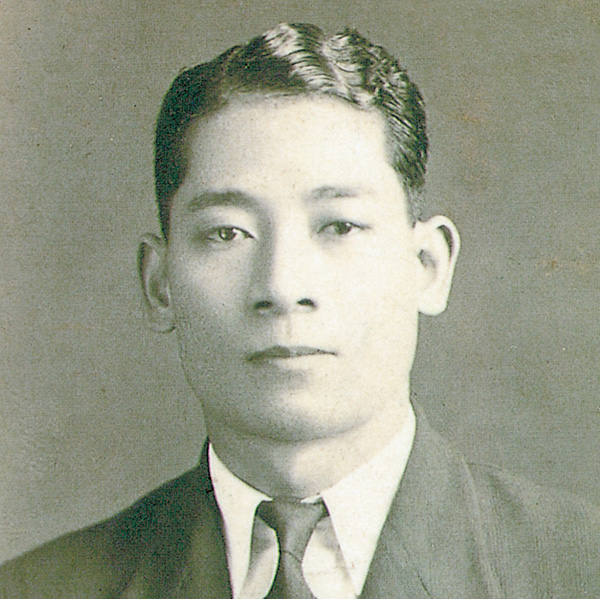
Ando in the 1930s when he launched one enterprise after another
NISSIN FOODS founder Momofuku Ando was born in 1910, a year in which Halley's Comet made a close Earth approach. Ando lost both parents in early childhood and was raised by grandparents who ran a kimono fabric shop, where he gained a close-up view of a place of business. Ando, who was filled with a spirit of independence and strong business drive, desired to do something new that no one else was doing. His first choice of occupation was the textiles business, and at the tender age of twenty-two he founded a company that sold knitted goods, which enjoyed great success. Ando became involved in a variety of other business ventures, including the manufacture of slide projectors, charcoal production, the fabrication of barrack housing, salt production, and the founding of a school. Ando's characteristic entrepreneurial spirit to rapidly commercialize ideas based on a quick grasp of emerging trends. The vitality to persevere and overcome failure emerged at this time. He engaged in all of these businesses on the basis of a firm conviction that he should seek out work that contributes to people's lives.
Japan faced a dire food shortage after the end of the Second World War. The streets were filled with hungry people, and countless numbers collapsed and died from malnutrition. Ando, who witnessed this horrifying spectacle, became keenly aware of the critical importance of food. He realized that in the absence of food, clothing and shelter are useless and there can be no art or culture.
As Ando was passing by a black market area near Osaka Station one day, he happened to see people form a long line in the cold at a makeshift stall to wait for a bowl of ramen noodles. The sight reminded Ando of how much Japanese people like noodles and at the same time filled him with conviction that the long line was a sign of enormous hidden demand. At that time, the government of Japan was recommending that people consume meals prepared using American surplus wheat. However, these meals consisted almost entirely of bread or biscuits, and Ando questioned why the government didn't recommend noodles, a favorite dish of the Japanese that could be made from the same wheat.
-
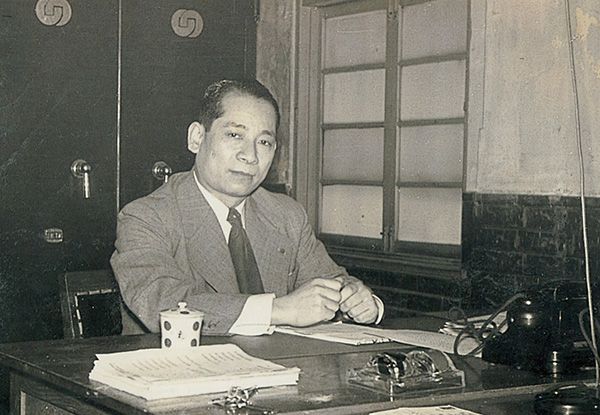
Ando at work as a director of a credit union
In 1957 a credit union where Ando was working as a director went bankrupt. Ando lost all of his property except a rented house in Ikeda City, Osaka. Nevertheless, Ando cheered himself up with the thought that all he had lost was property and that the experience of failure had strengthened him. Then, recalling the sight of the people forming a line at the black market ramen stall and the fact that noodles were a favorite food of the Japanese people, he resolved to create "Ramen that can be quickly prepared and eaten at home with only hot water." This marked Ando's first step toward realization of an idea he had been incubating for a long time in order to claw his way out of a life of poverty.
The Invention of Chicken Ramen, the Magic Ramen Noodles
-
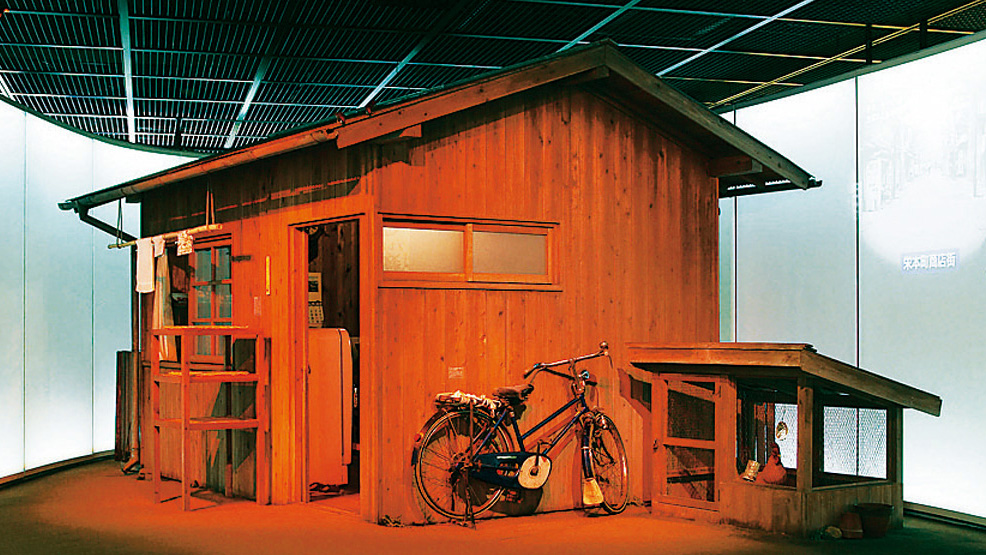
The work shed erected in the back yard of Ando's home (reproduction)
In a shed he built in the backyard of his home, Ando began research into "Ramen that can be quickly prepared and eaten at home with only hot water." He cobbled together all the tools and materials used for the project himself and conducted non-stop development alone for an entire year, without taking a single day of rest and sleeping only four hours a night on average. Each day was a desperate struggle.
Ando set five development objectives. The first and most important was that the noodles must have a delicious taste that people would not grow tired of. Next, they must be non-perishable so they can be stored in household kitchens. They must also be quick and easy to prepare, and furthermore, must be inexpensive. Finally, they must be safe and sanitary.
Although Ando had set clear objectives, since he was a complete amateur at noodle-making, he spent day after day preparing and discarding countless trial products. At long last, Ando arrived at the ideal formula through repetition of this daunting operation. This experience made him realize that food products are all about balance, and that their development is a task that involves trial-and-error pursuit until the single perfect balance is discovered.
"How should noodles be dried so that they can be stored for long periods of time?"
"What should be done to make them ready to eat just by adding hot water?" -
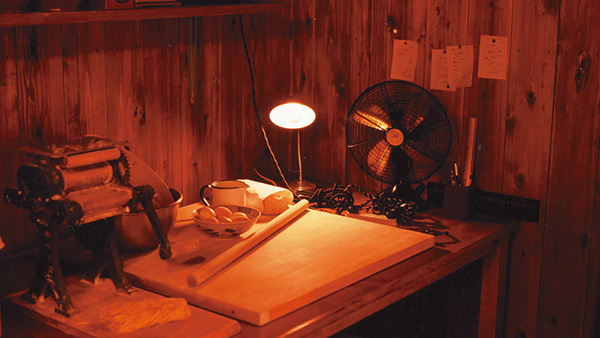
The interior of the work shed
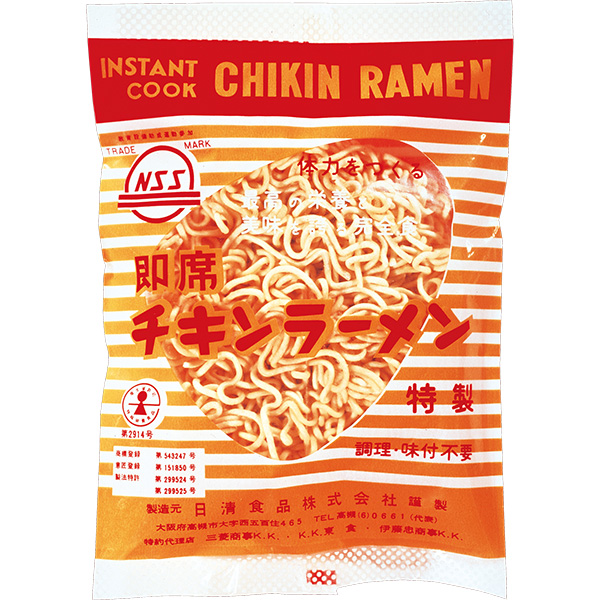
Chicken Ramen when it was first introduced
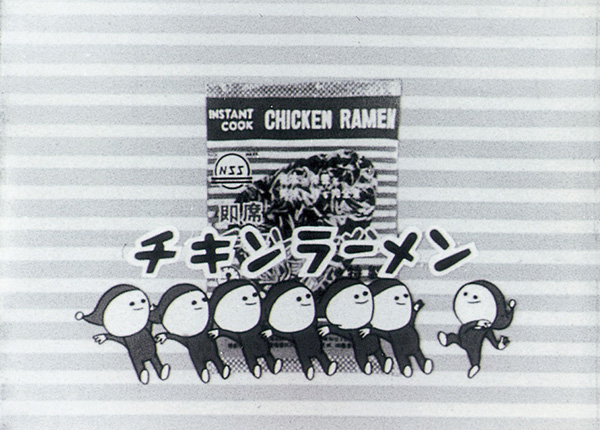
An early TV commercial
Achieving this storage stability and convenience was the highest barrier Ando faced in developing instant noodles. One day Ando went into the kitchen when his wife was deep-frying tempura. He noticed that the flour coating placed in the hot cooking oil was giving off moisture, making bubbles around it in the tempura pan. This was the answer! Apply the principle of tempura preparation to noodles. Ando promptly tried frying some noodles in the oil and found that the moisture in the noodles was forced out by the high-temperature oil. These noodles, which were nearly completely dehydrated, did not deteriorate or decompose even when stored long term. Ando realized that this production method also solved the problem of convenience. Hot water poured over the noodles was absorbed through tiny cavity made during dehydration and penetrated throughout the noodles, restoring them to their original softness.
In this way, Ando found the hint that led to the production technology that became the basis of instant noodles (flash-frying). On August 25, 1958 Chicken Ramen, the world's first instant noodles, was launched. Since Chicken Ramen, a food ready to eat in just two minutes after adding hot water, was a product inconceivable under the conventional wisdom of the times, it was dubbed "magic ramen."
When Chicken Ramen was introduced, the price was ¥35 per serving. At a time when the price of a bundle of udon noodles was ¥6, the owners of food wholesalers were reluctant to stock the product on the grounds that it wouldn't sell. However, Chicken Ramen increasingly gained a reputation among the people who actually ate it as being tasty and convenient, and before long wholesalers were inundated with orders. In the end, Chicken Ramen became such a hit product that a long line of wholesaler trucks formed in front of the factory to wait for it to come off the production line.
Chicken Ramen went on sale at just the time when the number of double-income households and nuclear families in Japan began to increase. Instant noodles, which can be prepared simply by adding hot water and can be stored for long periods of time, were a boon to homemakers. In addition, the first supermarket had appeared in Japan the year before the release of Chicken Ramen. The introduction of a Western-style distribution system completely different from the previous distribution model opened up a channel for high-volume sales of processed foods, including instant noodles. Furthermore, it was also around this time that the medium of television began to attract people's attention. Although in those days the power of television as a mass medium was an unknown quantity, Ando was quick to become a television sponsor and produce commercials. As television rapidly gained popularity, Chicken Ramen became widely known.
The Creation of Cup Noodles, a Product Infused with Ingenuity
-
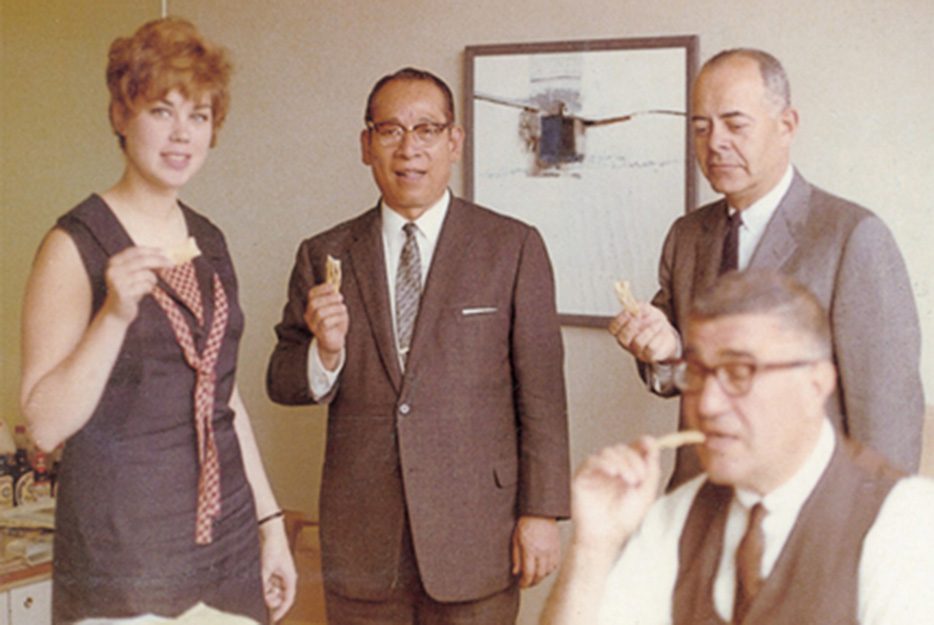
Obtaining the hint that led to Cup Noodles during an overseas inspection tour
Ando wanted to spread Chicken Ramen worldwide, and in 1966 set out on an inspection trip to Europe and the U.S. During a visit with the buyers for a supermarket chain in the U.S., he saw the managers in the office divide up a block of Chicken Ramen noodles, place the noodles in paper cups, add hot water, and begin eating with forks. When they were done, they threw their cups in the wastebasket. This made Ando realize that paying close attention to differences in eating habits was the key to making instant noodles a global food. The experience gave Ando the hint that prompted development of a new product: noodles in a cup that can be eaten with a fork.
-
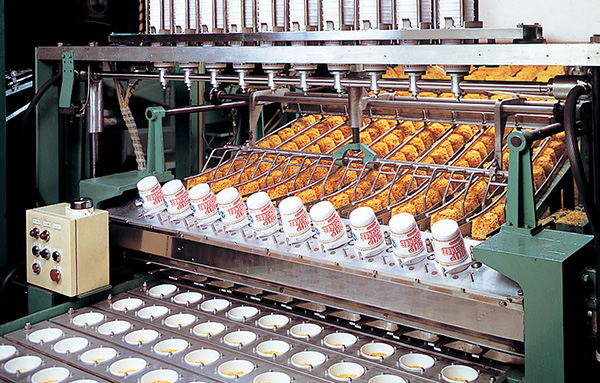
A production line that applies Ando's counterintuitive idea
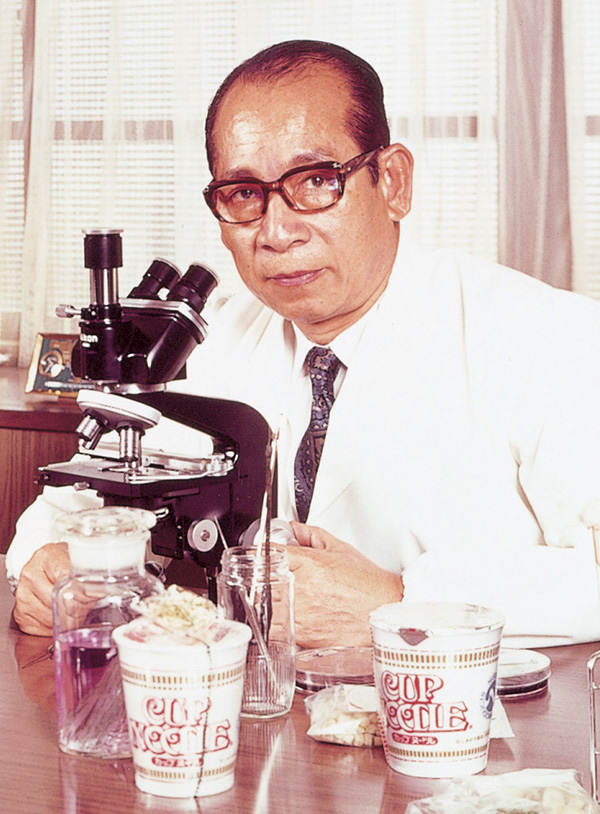
Ando with the finished product, Cup Noodles
New product development began with preparation of a container. The ideal container that Ando had in mind would be sized and shaped suitably for holding in one hand. Following production and consideration of nearly forty prototypes, a container resembling an enlarged paper cup was adopted. The material selected for the container was polystyrene foam, which is lightweight, offers good heat insulation, and is highly economical. However, it was an unusual material in Japan at the time, and processing it in thin sheets and molding it into containers that fit in one hand was no easy task. Accordingly, Ando introduced an American technology and launched an in-house container production project. Although it took time to refine the quality to the point of producing an odorless container suitable for food products, in the end a cup that far surpassed U.S. Food and Drug Administration (FDA) quality standards was perfected.
Although cup development had been successfully completed, filling the cups with noodles proved to be another difficult problem. Since the top of the cup is wide and the bottom narrow, noodles can easily be inserted provided the block is made smaller than the cup. The downside, however, is that the noodles can be jostled about inside the cup during transport and break apart. And so, Ando came up with the idea of making the block of noodles larger than the bottom of the cup and suspending it in the middle of the cup (called "middle retention"). However, when he actually tried putting the noodles into the cups, they would tilt or tip over. Ando thought about the problem constantly. One night after he had retired to bed, the ceiling suddenly seemed to spin as he had a flash of insight. The answer wasn't to drop a block of noodles into a cup, but rather to turn the block upside down and place the cup face down over it from above. This counterintuitive idea made possible reliable filling of the cups and opened the way to mass production at the factory.
-
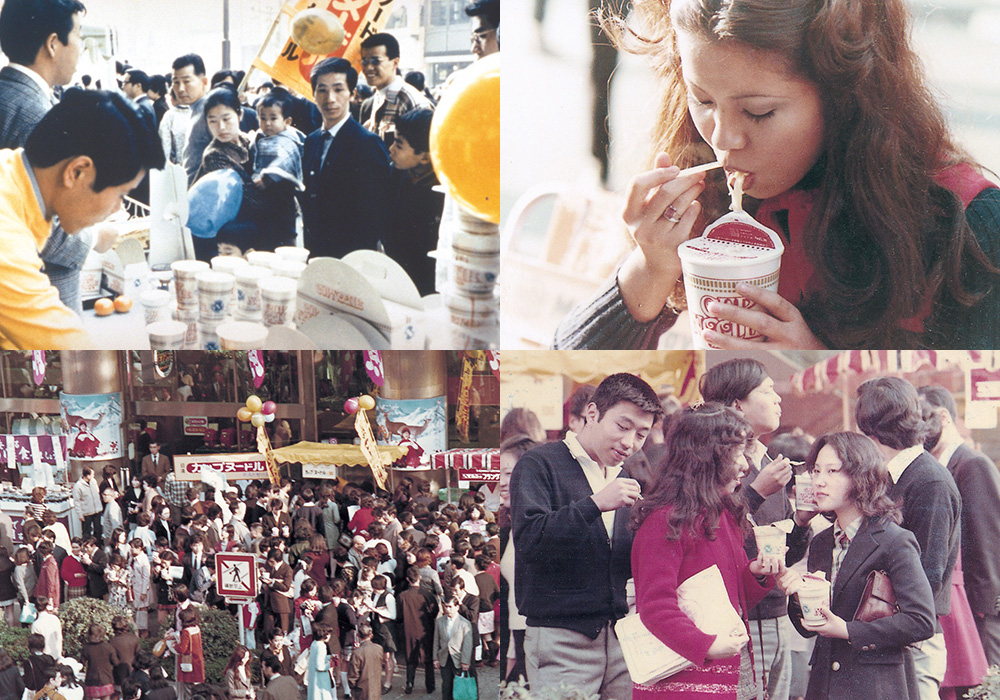
Direct sampling sales events at the pedestrian-only zone of Ginza
Cup Noodles is a product infused with various other ingenious ideas and devices in aspects including the lid, the ingredients, and the method of frying the noodles. Ando used to say "Tenacity is the breeding ground for inspiration," and he not only introduced new materials and technologies, but also devised new approaches to solve problems one after another. The new product that resulted from this process, named Cup Noodles so that it would be readily understood around the world, was introduced on September 18, 1971.
-
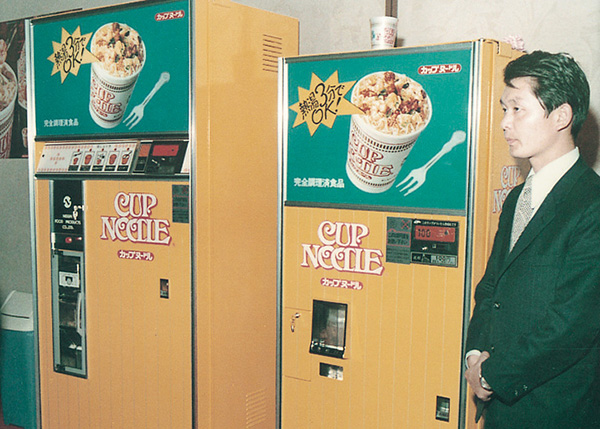
Dedicated vending machines that dispense hot water
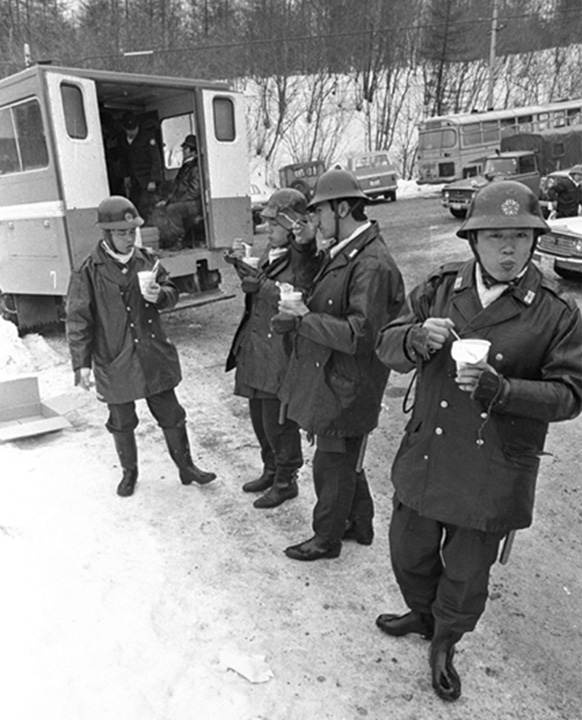
Members of the riot squad eating Cup Noodles (photo provided by Bungeishunju Ltd.)
Since Cup Noodles carried a premium price of ¥100 per serving at a time when bag-type instant noodles were priced at ¥25 and people were saying that eating while standing is bad manners, retailers were reluctant to stock the product. Accordingly, Ando decided that the company would open up a new sales channel and engage in unprecedented advertising and sales promotion. The company prepared vending machines that dispensed hot water so that customers could prepare and eat Cup Noodles right where they purchased them. These novel vending machines attracted considerable attention, and 20,000 units were installed nationwide in a year's time. In addition, the company focused attention on the pedestrian-only zone in Ginza, a popular place for young people to gather. Direct sampling sales events for Cup Noodles drew far larger crowds than expected and became so popular that on good days the company sold 20,000 servings.
Then, an event critical in determining the popularity of Cup Noodles occurred. This was the widely televised Asama-Sanso incident in February 1972 in which a Japanese revolutionary armed group was surrounded in a mountain villa. The incident was broadcast live daily on television, and scenes of members of Tokyo Metropolitan Police Department riot squad eating Cup Noodles during the siege of the mountain lodge where the incident occurred were televised. This resulted in unexpected publicity to viewers nationwide, and Cup Noodles began to fly off the shelves.
Cup Noodles was introduced in the U.S. market in 1973 under the name Cup O'Noodles. Business bases were subsequently set up in rapid succession in Brazil, Singapore, Hong Kong, India, the Netherlands, Germany, Thailand, and other countries. The company did not export the flavors sold in Japan, instead, developing soups, ingredients, and other product aspects that reflected the preferences of the people of each country and region. As a result, Cup Noodles became a global food that originated in Japan.
Space Ram — Food That Supports the Diet of Humans in Space
-
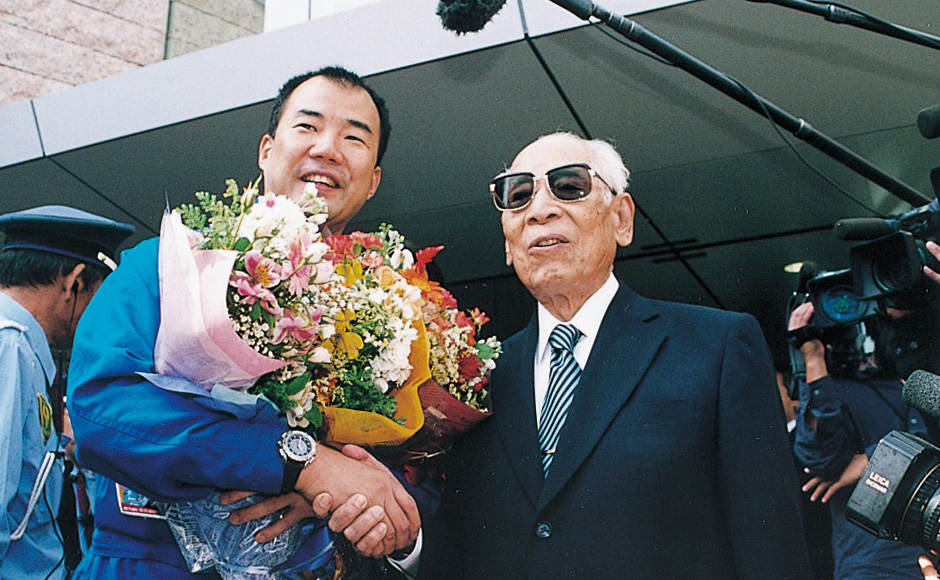
Ando exchanging a firm handshake with astronaut Soichi Noguchi
Ando, who never lost his enthusiasm for product development even in his declining years, was 91 years old when he declared that the company would develop space food. He formed a project team that he himself headed and began development. The team perfected Space Ram, instant noodles to be consumed in space, coming up with ingenious ideas such as thickening the soup to prevent it from escaping in zero gravity and making noodles in a size and shape to be eaten in a single bite. In the end, however, the technology that became the foundation of product development was the flash-frying process that Ando discovered in 1958. The Space Ram project attested that instant noodles is an excellent food that has met needs from the time of its development into the space age.
-
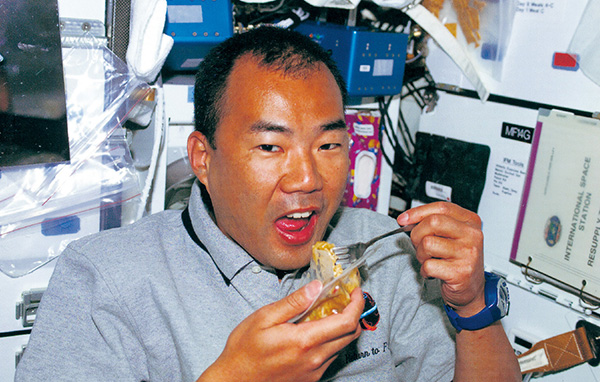
Astronaut Soichi Noguchi enjoying Space Ram aboard the space station (© NASA/JAXA)
Space Ram journeyed into space in July 2005 aboard the space shuttle Discovery. Astronaut Soichi Noguchi, who became the first human to eat instant noodles in space, reported on a live broadcast from the International Space Station that the flavor of instant noodles consumed on Earth had been reproduced to an astonishing degree. Ando, who realized a dream of many years at the age of 95, said, "There's no such thing as too late in life." His enthusiasm to create new foods had at last escaped the bonds of Earth and spread into space.
-

In January 2007, Ando addressed the assembled employees in an annual kickoff ceremony and energetically went to work right from the start of the year. However, he fell ill early in the morning on January 5 and died of acute myocardial infarction. He passed suddenly, fulfilling his desire to "Live healthy and die healthy." The news of his death raced around the world, and in an editorial the New York Times expressed appreciation for the achievements of "Mr. Noodles."
Momofuku Ando invented instant noodles, changing the dietary culture of the world. A half century after Ando brought the world Chicken Ramen, total worldwide demand for instant noodles surpassed one billion servings. The spirit of Ando, who continued to possess creative ideas and the tenacity to persevere until the close of his life at the age of 96, is carried on today by the NISSIN FOODS Group.